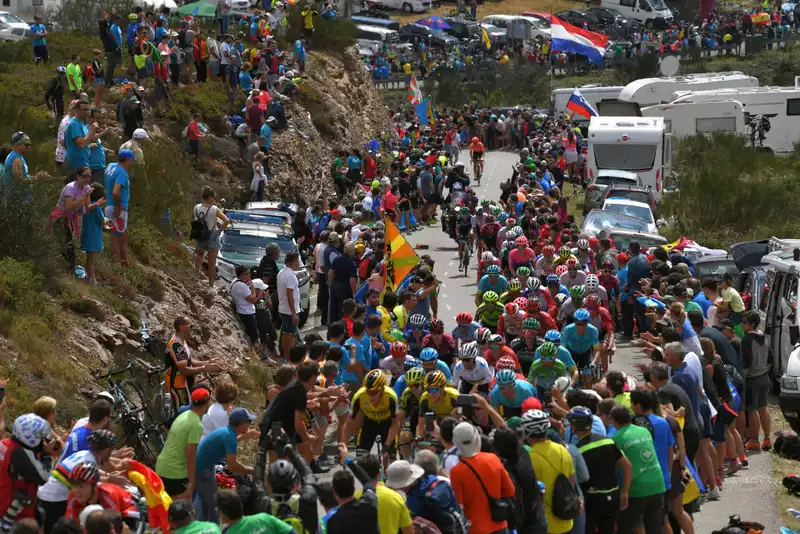A large independent survey on the social impact of the 2019 Vuelta a España found that, quite apart from the gratification of seeing the race live, a significant majority of roadside spectators believe that the Vuelta will have considerable long-term benefits for the towns and cities through which the race passes We found that.
The 2019 Vuelta a España survey was conducted by researchers at the University of Murcia in southeastern Spain and published online Tuesday morning.
Of the 4,585 local residents interviewed, 93 percent of fans felt that the biggest benefit was the strengthening of the town's national visibility and image, while an almost equal number, 92 percent, felt that their town benefited from the concrete financial investments made by public authorities with the arrival of the race felt that they had benefited.
One example, and this is not part of the report but more of an urban legend in Spain, is that the roads used by the Vuelta a España in certain municipalities are often mysteriously benefited by road resurfacing just days before the race's arrival.
In addition, about 90.7 percent thought that the race passing through their hometown would encourage tourism to their hometown, and 90.3 percent thought it would have a positive impact on local businesses.
Contrary to the widespread belief that the most avid cycling spectators tend to be older adults, the survey found that the greatest degree of popularity for La Vuelta was among the under-25 age group.
It could be argued that spectators who travel to the roadside to watch a bicycle race are unlikely to consider themselves unworthy. However, researchers at the University of Murcia attempted to take this into account by testing spectators' reactions before, during, and after the race.
They found that concerns about the Vuelta's possible impact on the environment decreased, especially as the race passed through town and spectators witnessed its actual effects.
In addition, local commerce in towns and cities where the Vuelta was set reported a 36.7 percent increase in transactions, and 94.6 percent of businesses said they wanted the Vuelta back.
Of the 1,041 tourists (non-residents) who traveled to watch the Vuelta, they spent an average of only €37 per person to watch the Vuelta. However, about 90 percent said they would return, especially to that town, and would probably spend more, while 97.4 percent said they would return again regardless of where the Vuelta was held.
Interestingly, while it is traditionally believed that most tourists visiting the Tour de France are not French, at least in the Vuelta, about 80 percent of the non-residents watching the race are Spanish and travel an average distance of 151 km. Almost all were in groups of three or four. Like the residents, the majority of the tourist spectators spent at least five hours a week playing some form of sport, with the highest percentage (35%) being cyclists.
The researchers argued that the Vuelta a España enjoyed greater local social support than the (relatively few) recent major studies shown for other Grand Tours, notably a 2007 study of roadside spectators of the Tour de France. Globally, the 2019 Vuelta numbers were an improvement over the one-stage study conducted by investigators for the 2018 race.
Another interesting piece of data was that while half of the roadside spectators reported watching La Vuelta on television when not watching the race, a significant percentage (a quarter) watched the race primarily or only via the Internet.


Comments